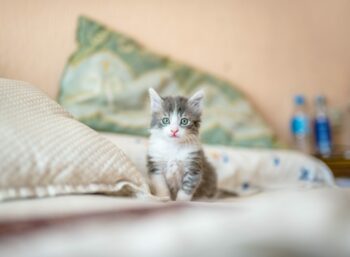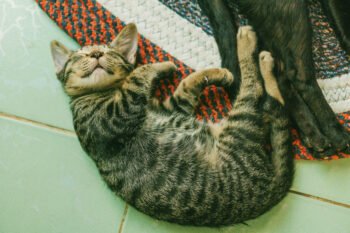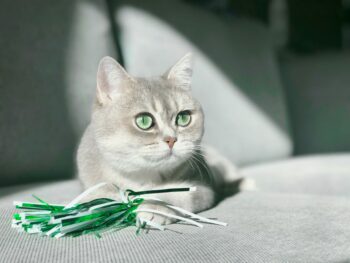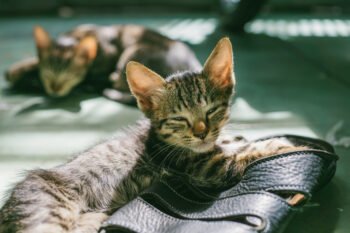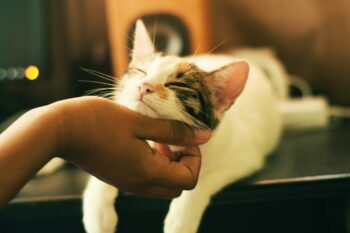Color – A wide variety of colors and patterns are available.
Coat Length – The Manx comes in both Shorthair and Longhair. The Shorthair has a double coat that is short and dense with a well-padded quality due to the longer, open outer coat and the close cottony undercoat. In the Longhair, the double coat is of medium length, dense and well padded over the main body, gradually lengthening from the shoulders to the rump.
Eyes – Varies from brilliant copper, blue, odd-eyed, green or blue-green. Eye color is depending upon coat color.
Appearance – Besides taillessness, the Manx is known for its robust and rounded appearance. This cat can actually be drawn with a series of circles! It has a very round head and rounded cheeks which give it a jowly appearance; even more so in the male cat than in the female. It is high in the hindquarters with the back legs much longer than the forelegs, thus causing the rump to be higher than the shoulders. The Manx should have a sweet expression.
Personality – The Manx is a very playful cat as a rule. They can jump higher than anyone could imagine, and it is not unusual to find them perching on the highest point in any room. Manx exhibit many dog-like characteristics such as retrieving and burying their toys. They will either be known as a “one person cat” or the “family cat.” Once they bond with someone, it is difficult for many Manx to be happy in a different home. On the other hand, there are those Manx that readily accept attention from any human source!
History – The Manx cat is believed to have originated hundreds of years ago on the Isle of Man, off the coast of England. Since many trade ships docked on the Isle, and all had ship cats, it is hard to tell just what the parent cat really was. CFA has recognized the Manx as a breed since the 1920s.
Breed information supplied by the
Cat Fanciers’ Association

